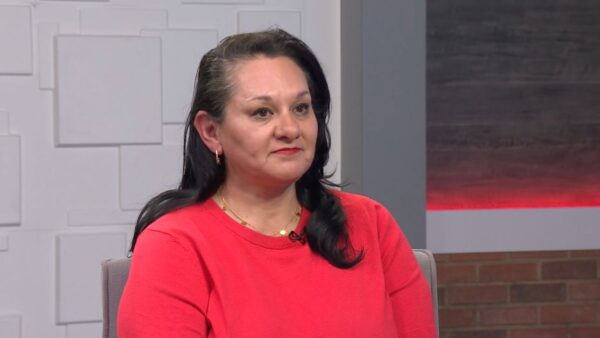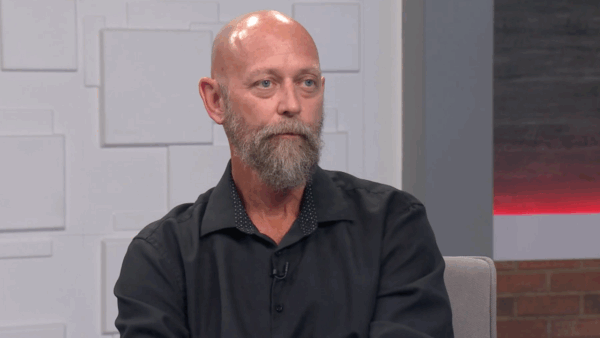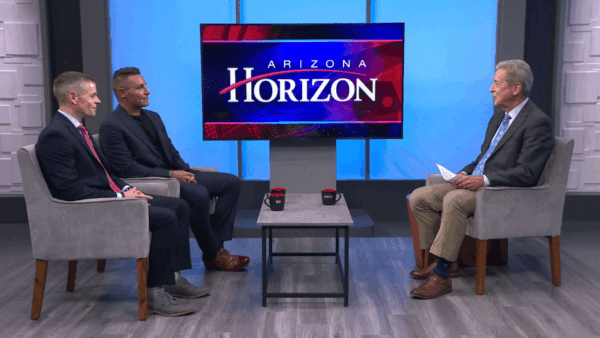Sam Frank, Central Arizona Director of the Wilderness Coalition of Arizona talks about the group’s Wilderness Stewards Program a partnership with the U.S. Forest Service to maintain, protect and restore wilderness areas.
Ted Simons: the Arizona Wilderness Aoalition stays busy protecting and restoring the state's wilderness areas and you are invited to help. Earlier I discussed the coalition's work and mission with the Central Arizona director Sam Frank.
Ted Simons: Thanks for joining us tonight on "Horizon."
Sam Frank: Thank you for having me, Ted.
Ted Simons: Before we get into what the Wilderness Coalition of Arizona does, what is a wilderness?
Sam Frank: Great question. Wilderness in the sense of the work we do is federal lands, public land. And it's defined by a designation from Congress. So wilderness areas are pristine undeveloped areas, no roads, no buildings in them. And they are created by Congress. So tracts of land set aside for things like sources of clean water, clean air for wildlife, for recreation.
Ted Simons: We know what a wilderness is. What does the wilderness coalition do?
Sam Frank: We are a nonprofit organization and we're statewide. From all corners of the state. We are focused on wilderness areas and wild and scenic rivers. So we're a little different from some of the national groups. If someone supports Arizona Wilderness Coalition all of that support stays right here in Arizona.
Ted Simons: There's a stewardship program aligned with the coalition, correct?
Sam Frank: Yes.
Ted Simons: What's that all about?
Sam Frank: We came up with this program last year. And right now it's a pilot program on the Prescott national forest, this is a way to get people involved in wilderness forests, from just a weekend volunteer event or maybe more extensive training. It's sort of the eyes and ears on the land.
Ted Simons: This is basically open to anyone? Do they have to equal qualify, any experience necessary for this?
Sam Frank: No, they can volunteer on the weekends or come out with family or friends and try it out just to get out. Like I said, they can take it up another level and get trainings on traditional tool use or leave no trace principles and become certified in different things.
Ted Simons: So, are those the things that they can learn? What can they do? It is a learning process.
15
Sam Frank: Sure. The whole thing is a learning process. There's always something new people can learn. It's open to all experience levels. You can be on foot or horseback. It's eyes on the ground, people going out and letting us know the conditions of trails. If they see nonnative plants in these areas. Impacts from, say, a campsite or something like that. As they get more involved in the program they can help us set up events, as well.
Ted Simons: Who's expressing interest in this?
Sam Frank: It's really kind of been all over the board as far as age or gender or whatever, it's been all over, which is really nice. We'll have a mix of younger people and people who are middle-aged, family members, single people. It's really everybody.
Ted Simons: You guys are very much involved in repairing and trying to renovate and re-vegetate stuff damaged by the wall of fire.
Sam Frank: We realized the damage from the wall of fire all across Arizona. It's about getting people outdoors and giving back and trying to take care of some of the land here in Arizona. We wanted to give something back to the area when we saw it. We organized an event and volunteers did a little bit of trail maintenance so people could go back to these communities. It helps the communities economically as well as providing recreational opportunities for people. We removed some of the crime scene tape around the area where the fire actually started and just assess the conditions of the trail and the wilderness area.
Ted Simons: Let's take the wall of fire in particular. What would I have done on this particular project?
Sam Frank: A big part of it was a talk on fire ecology and the role fire plays in some of our landscapes here in Arizona. Some of the trail maintenance involved cutting back brush or getting some of the dead timber that had fallen and been burned off the trail. Removing some of that garbage. As well as monitoring, sometimes it's an opportunity for nonnative plants to pop up in there. We like to see if we can find those plants and remove them before they take hold in these areas.
Ted Simons: It's the kind of thing where you can see immediate results, and then with the re-vegetation I would imagine you have to wait a while before you see something happening there. Other projects besides the wall of fire?
Sam Frank: Sure. We have a number of programs going on right now, the stewards program is a pilot program on the Prescott national forest. We have events listed on our website, people get e-mails from us. We have them going right through the winter this year. Events range from pretty easy day hike type was events to overnight events, some that are 14-mile treks through some of these areas. Those vary whether they are doing trail maintenance or monitoring or hiking or backpacking. It's about getting people out in the areas and getting them healthy and getting them exposed to the wilderness areas and the benefits they can provide.
Ted Simons: I'm thinking, in case people want to give it a shot, how do they get there?
Sam Frank: They can visit our website, which is www.azwild.org, and we have offices in Phoenix, Tucson and Prescott and they can find those on our website.
Ted Simons: How did you get involved in the wilderness? Did you grow up, camp outside in the backyard kind of guy?
Sam Frank: I did have a state forest behind my house growing up and that sparked my interest in being outdoors. Then I lived out west for a while and experienced wilderness. Once I got exposed to those I wanted to work with them through jobs and in a roundabout way I found myself working for the Arizona Wilderness Coalition.
Ted Simons: Does it seem like more and more people are interested in this, or is it something you still have to go out and recruit folks to get interested?
Sam Frank: I think more and more folks are becoming interested. It's an ongoing battle to get the word out to as many people as possible. People are realizing these are our public lands and they are there for us. There are no fees to go on them, and they can come out, get healthy, get some exercise and they are giving something back to our public lands at the same time.
Ted Simons: Thanks for joining us, we appreciate it.
Sam Frank: Thank you for having me.
Ted Simons: Tomorrow on "Horizon," why family caregivers are an important piece of Arizona's health care puzzle. And a premiere science festival coming to Arizona, Wednesday at 7:00 on "Horizon." You can catch "Horizon" on the web, that's azpbs.org/horizon. That is it for now, I'm Ted Simons. Thank you so much for joining us, you have a great evening.
Sam Frank:Central Arizona Director, Wilderness Coalition of Arizona;























